Ditapis dengan

Analisa Pengaruh Proses Cold Working Terhadap Perubahan Sifat Kekerasan dan K…
- Edisi
- 1
- ISBN/ISSN
- -
- Deskripsi Fisik
- -
- Judul Seri
- -
- No. Panggil
- CD-2150045
- Edisi
- 1
- ISBN/ISSN
- -
- Deskripsi Fisik
- -
- Judul Seri
- -
- No. Panggil
- CD-2150045

Analisa Pengaruh Proses Cold Working Terhadap Perubahan Sifat Kekerasan dan K…
- Edisi
- 1
- ISBN/ISSN
- -
- Deskripsi Fisik
- xi, 63 hal. : ilus. ; 29,5 cm
- Judul Seri
- -
- No. Panggil
- TA-2150158
- Edisi
- 1
- ISBN/ISSN
- -
- Deskripsi Fisik
- xi, 63 hal. : ilus. ; 29,5 cm
- Judul Seri
- -
- No. Panggil
- TA-2150158

Arbeitsblätter Zur Fachkunde Elektrotechnik Teil 1 Lösungen
- Edisi
- 1
- ISBN/ISSN
- 3-8085-3105-3.
- Deskripsi Fisik
- 62 hal. : ilus. ; 30 cm.
- Judul Seri
- -
- No. Panggil
- 621.301 FUN
- Edisi
- 1
- ISBN/ISSN
- 3-8085-3105-3.
- Deskripsi Fisik
- 62 hal. : ilus. ; 30 cm.
- Judul Seri
- -
- No. Panggil
- 621.301 FUN

Arbeitsblätter Zur Fachkunde Elektrotechnik Teil 2 Lösungen
- Edisi
- 1
- ISBN/ISSN
- 3-8085-3053-7.
- Deskripsi Fisik
- 46 hal. : ilus. ; 30 cm.
- Judul Seri
- -
- No. Panggil
- 621.301 FUN
- Edisi
- 1
- ISBN/ISSN
- 3-8085-3053-7.
- Deskripsi Fisik
- 46 hal. : ilus. ; 30 cm.
- Judul Seri
- -
- No. Panggil
- 621.301 FUN
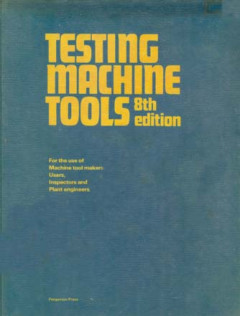
Testing Machine Tools 8ed
- Edisi
- 8
- ISBN/ISSN
- 0-08-021685-4
- Deskripsi Fisik
- 109 hal. : ilus. ; 29 cm
- Judul Seri
- -
- No. Panggil
- 621.902 SCH t
- Edisi
- 8
- ISBN/ISSN
- 0-08-021685-4
- Deskripsi Fisik
- 109 hal. : ilus. ; 29 cm
- Judul Seri
- -
- No. Panggil
- 621.902 SCH t

Kinematics and Dynamics Of Machines 2 edition
- Edisi
- 2ed
- ISBN/ISSN
- 9781577662501
- Deskripsi Fisik
- xiii, 492 hlm. ; ilus. ; 24,5 cm
- Judul Seri
- -
- No. Panggil
- 621.81 GEO k
- Edisi
- 2ed
- ISBN/ISSN
- 9781577662501
- Deskripsi Fisik
- xiii, 492 hlm. ; ilus. ; 24,5 cm
- Judul Seri
- -
- No. Panggil
- 621.81 GEO k
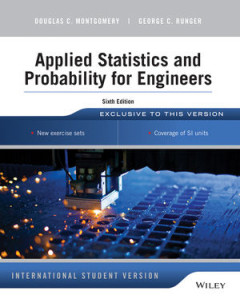
Applied Statistics and Probability For Engineers sixth edition
- Edisi
- 6ed
- ISBN/ISSN
- 9781118744123
- Deskripsi Fisik
- xvi, 765 hlm. ; ilus. ; 25,5 cm
- Judul Seri
- -
- No. Panggil
- 519.5 DOU a
- Edisi
- 6ed
- ISBN/ISSN
- 9781118744123
- Deskripsi Fisik
- xvi, 765 hlm. ; ilus. ; 25,5 cm
- Judul Seri
- -
- No. Panggil
- 519.5 DOU a

Material Selection In Mechanical Design 5 Edition
- Edisi
- 5ed
- ISBN/ISSN
- 9780081005996
- Deskripsi Fisik
- xiii, 646 hlm. ; ilus. ; 23,5 cm
- Judul Seri
- -
- No. Panggil
- 621.815 MIC m
- Edisi
- 5ed
- ISBN/ISSN
- 9780081005996
- Deskripsi Fisik
- xiii, 646 hlm. ; ilus. ; 23,5 cm
- Judul Seri
- -
- No. Panggil
- 621.815 MIC m

Finite Element Applications
- Edisi
- -
- ISBN/ISSN
- 9783319671246
- Deskripsi Fisik
- xxiv, 472 hlm. ; ilus. ; 24 cm
- Judul Seri
- -
- No. Panggil
- 620.001 MIC f
- Edisi
- -
- ISBN/ISSN
- 9783319671246
- Deskripsi Fisik
- xxiv, 472 hlm. ; ilus. ; 24 cm
- Judul Seri
- -
- No. Panggil
- 620.001 MIC f

Casting Defects Handbook : Iron & Steel
- Edisi
- -
- ISBN/ISSN
- 9780874333145
- Deskripsi Fisik
- vi, 231 hlm. ; 18 cm
- Judul Seri
- -
- No. Panggil
- 671.2 DAV c
- Edisi
- -
- ISBN/ISSN
- 9780874333145
- Deskripsi Fisik
- vi, 231 hlm. ; 18 cm
- Judul Seri
- -
- No. Panggil
- 671.2 DAV c

Manufacturing Processes and Equipment
- Edisi
- -
- ISBN/ISSN
- 0-201-49865-0
- Deskripsi Fisik
- xxiii, 928 hlm. : ilus. ; 27 cm
- Judul Seri
- -
- No. Panggil
- 670.42 M g
- Edisi
- -
- ISBN/ISSN
- 0-201-49865-0
- Deskripsi Fisik
- xxiii, 928 hlm. : ilus. ; 27 cm
- Judul Seri
- -
- No. Panggil
- 670.42 M g

Reading the World Ideas that Matter 2ed
- Edisi
- 2
- ISBN/ISSN
- 9780393933499
- Deskripsi Fisik
- xxviii, 673 hlm. : ilus. ; 23 cm
- Judul Seri
- -
- No. Panggil
- 808.0427 AUS r
- Edisi
- 2
- ISBN/ISSN
- 9780393933499
- Deskripsi Fisik
- xxviii, 673 hlm. : ilus. ; 23 cm
- Judul Seri
- -
- No. Panggil
- 808.0427 AUS r

Data Structures and Algorithms In C++ 2ed
- Edisi
- 2
- ISBN/ISSN
- 978-0470383278
- Deskripsi Fisik
- xxii, 714 hlm. : ilus. ; 23.5 cm
- Judul Seri
- -
- No. Panggil
- 005.117 GOO d
- Edisi
- 2
- ISBN/ISSN
- 978-0470383278
- Deskripsi Fisik
- xxii, 714 hlm. : ilus. ; 23.5 cm
- Judul Seri
- -
- No. Panggil
- 005.117 GOO d
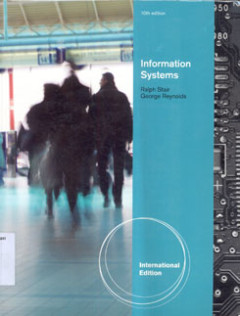
Information Systems 10ed
PART 1 OVERVIEW Chapter 1 An Introduction to Information Systems Chapter 2 Information Systems I Organizations PART 2 INFORMATION TECHNOLGOY CONCEPTS Chapter 3 Hardware: Input, Processing, and Output Devices Chapter 4 Software: Systems and Application Software Chapter 5 Database Systems, Data Centers, and Business Intelligence Chapter 6 Telecommunications and Ne…
- Edisi
- 10
- ISBN/ISSN
- 978-1111532932
- Deskripsi Fisik
- xxvii, 675 hlm. : ilus. ; 27,5 cm
- Judul Seri
- -
- No. Panggil
- 650.0285 RAL i
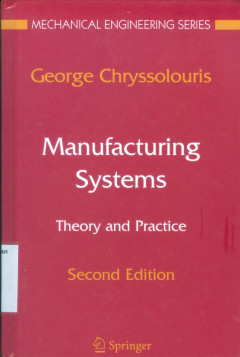
Manufacturing Systems. Theory and Practice 2ed
1 Introduction , 1 1.1 A Guide to this Book, 1 1.2 Economic Perpective, 2 1.3 A Decision Making Framework for Manufacturing Systems, 9 2 Overview of Manufacturing Processes , 55 2.1 Introduction, 55 2.2 Primary Forming Processes, 57 2.3 Deforming Processes, 68 2.4 Removing Processes, 71 2.5 Joining Processes, 92 2.6 Modifying Material Properties Processes, 106 2.7 Nanomanufacturin…
- Edisi
- 2
- ISBN/ISSN
- 978-0-387-25683-2
- Deskripsi Fisik
- xxv, 602 hal. : ilus. ; 24 cm
- Judul Seri
- Mechanical Engineering Series
- No. Panggil
- 670 CHR m
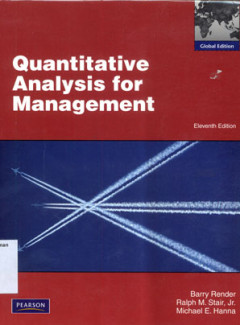
Quantitative Analysis for Management 11ed
Chapter 1 Introduction to Quantitative Analysis 21 Chapter 2 Probability Concepts and Applications 41 Chapter 3 Decision Analysis 89 Chapter 4 Regression Models 135 Chapter 5 Forecasting 173 Chapter 6 Inventory Control Models 215 Chapter 7 Linear Programming Models: Graphical and Computer Methods 269 Chapter 8 Linear Programming Applications 327 Chapter 9…
- Edisi
- 11
- ISBN/ISSN
- 978-0273752868
- Deskripsi Fisik
- 667 hlm. : ilus. ; 27,5 cm
- Judul Seri
- -
- No. Panggil
- 658.403 REN q

Mechanical Metallurgi SI Metric Edition
- Edisi
- S1 Metric
- ISBN/ISSN
- 978-0071004060
- Deskripsi Fisik
- xxiii. 751 hal. : ilus. ; 23,5 cm
- Judul Seri
- -
- No. Panggil
- 620.163 DIE m
- Edisi
- S1 Metric
- ISBN/ISSN
- 978-0071004060
- Deskripsi Fisik
- xxiii. 751 hal. : ilus. ; 23,5 cm
- Judul Seri
- -
- No. Panggil
- 620.163 DIE m

Structural Identification And Damage Detection Using Genetic Algorithms. Volu…
Rapid advances in computational methods and computer capabilities have led to a new generation of structural identification strategies. Robust and efficient methods have successfully been developed on the basis of genetic algorithms (GA) . This volume presents the development of a novel GA based identification strategy that contains several advantageous features compared to previous methods. Fo…
- Edisi
- 1
- ISBN/ISSN
- 978-0415461023
- Deskripsi Fisik
- xii, 146 hal. : ilus. ; 25 cm
- Judul Seri
- Structures and Infrastructures
- No. Panggil
- 624.171 CHA s

Thermodynamics an Engineering Approach 7 edition in SI Unit
Chapter 1 Introduction & Basic Concepts , 1-50 Chapter 2 Energy, Energy Transfer, General Energy Analysis , 51-110 Chapter 3 Properties of Pure Substances , 111-162 Chapter 4 Energy Analysis of Closed Systems , 163 Chapter 5 Mass & Energy Analysis of Control Volumes , 213-272 Chapter 6 The Second Law of Thermodynamics , 273 Chapter 7 Entropy , 327-4…
- Edisi
- 7
- ISBN/ISSN
- 978-0071311113
- Deskripsi Fisik
- xxv, 978 hal. : ilus. ; 25 cm
- Judul Seri
- -
- No. Panggil
- 621.402 ÇEN t

Mechanical Metallurgy SI Metric Edition
- Edisi
- 1
- ISBN/ISSN
- 0-07084187X
- Deskripsi Fisik
- xxiii, 751 hal. : ilus. ; 26 cm
- Judul Seri
- -
- No. Panggil
- 620.163 DIE
- Edisi
- 1
- ISBN/ISSN
- 0-07084187X
- Deskripsi Fisik
- xxiii, 751 hal. : ilus. ; 26 cm
- Judul Seri
- -
- No. Panggil
- 620.163 DIE
 Karya Umum
Karya Umum  Filsafat
Filsafat  Agama
Agama  Ilmu-ilmu Sosial
Ilmu-ilmu Sosial  Bahasa
Bahasa  Ilmu-ilmu Murni
Ilmu-ilmu Murni  Ilmu-ilmu Terapan
Ilmu-ilmu Terapan  Kesenian, Hiburan, dan Olahraga
Kesenian, Hiburan, dan Olahraga  Kesusastraan
Kesusastraan  Geografi dan Sejarah
Geografi dan Sejarah